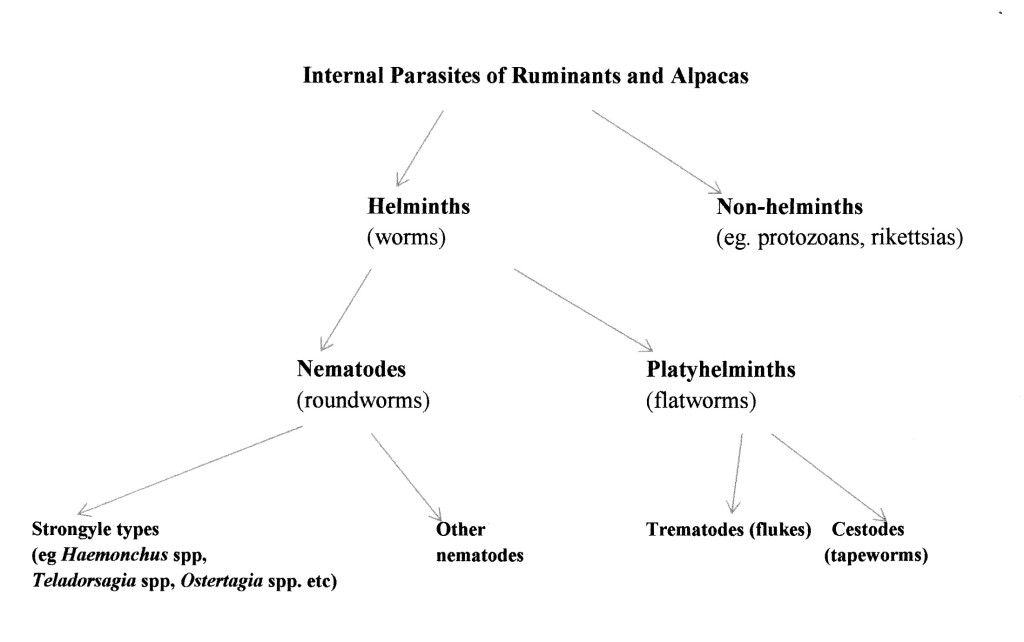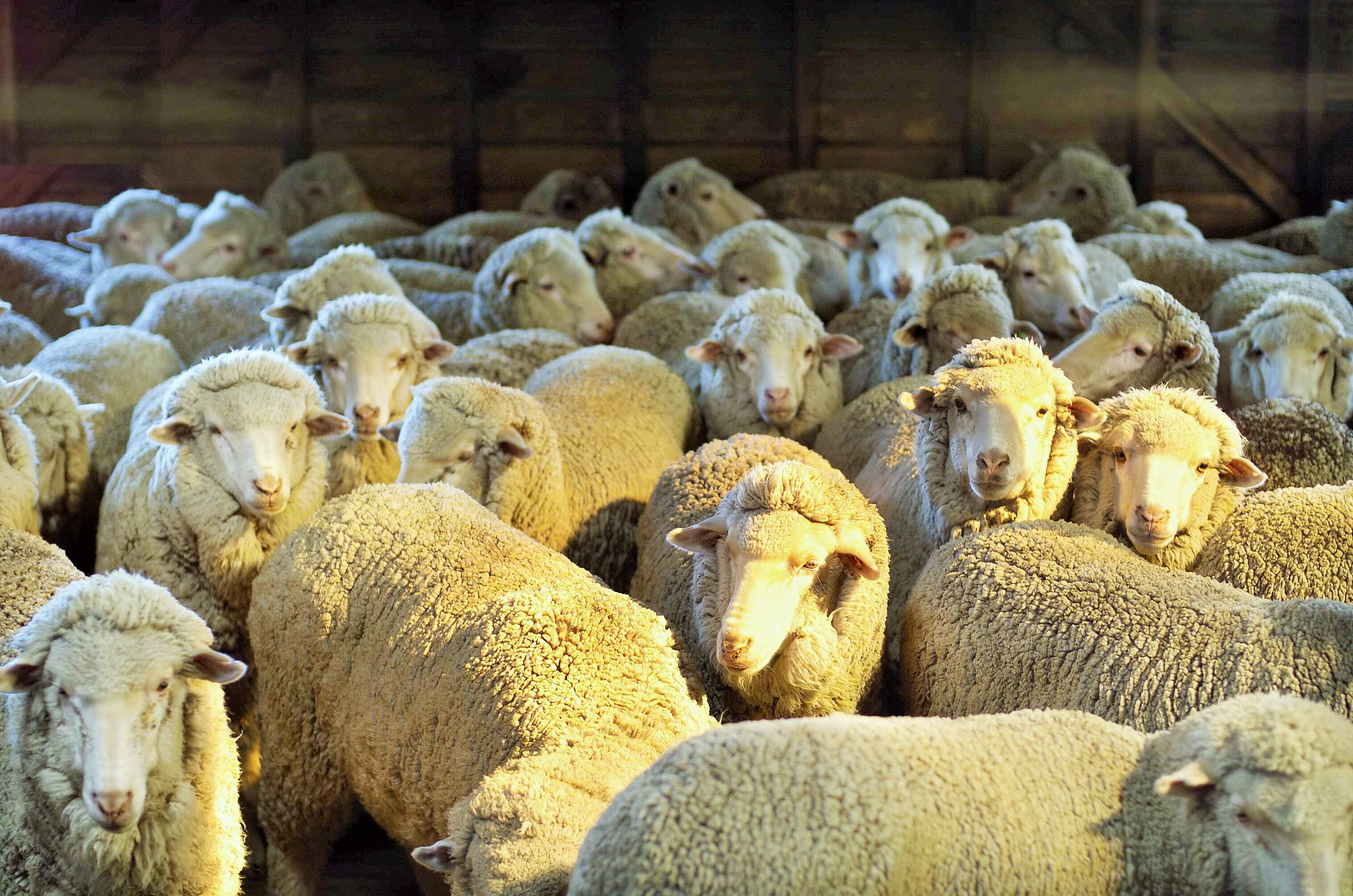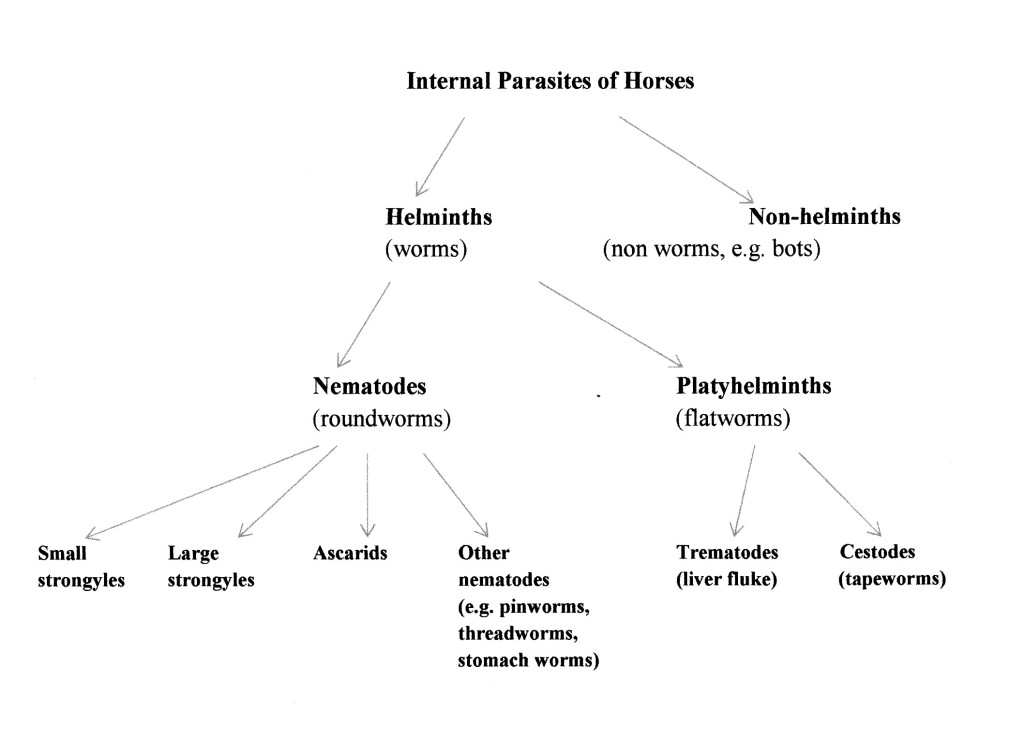Internal Parasites of Horses, Ruminants and Alpacas
Internal Parasites of Horses, Ruminants (Sheep, Cattle and Goats) and Alpacas
The main internal parasites of horses, ruminants and alpacas are parasitic worms (helminths). Helminths include roundworms (nematodes) and flatworms (platyhelminths).
Horses:
The main equine parasite eggs detected by faecal egg count (FEC) tests are those of the small strongyles (small red worms) and ascarids (roundworms* or large roundworms ) (mainly in foals). Large strongyles (blood worms or large red worms) are indistinguishable from small strongyles but generally make little contribution to egg count.
* Note: The common name, ‘roundworms’, for ascarids is unfortunate as it creates confusion with the fact that the broader group of nematodes are roundworms.

Sheep:
The main sheep parasite eggs detected by FEC tests are the strongyles, namely Haemonchus contortus (barber’s pole worm), Teladorsagia circumcinta (brown stomach worm / small brown stomach worm) and Trichostrongylus spp. (including T. colubriformis and T. vitrinus) (black scour worm). Chabertia ovina (large mouth bowel worm) and Oesophagostomum spp. (nodule worm), of lesser importance, are other strongyles whose eggs can be detected. Additionally, Nematodirus spp. (thin-necked intestinal worm) eggs can be distinguished from strongyle eggs and counted separately.

Cattle:
The main cattle parasite eggs detected by FEC tests are the strongyles, namely Ostertagia ostertagia (brown stomach worm / small brown stomach worm), Haemonchus placei (barber’s pole worm), Trichostrongylus spp. (black scour worm), Cooperia spp. (intestinal worm) and Oesophagostomum radiatum (nodule worm). Bunostomum spp. (hookworm), of lesser importance, is another strongyle whose eggs can be detected.

Goats:
The main goat parasite eggs detected by FEC tests are similar to those of sheep, although goats also share some parasites with cattle. Haemonchus contortus (barber’s pole worm), Trichostrongylus spp. (black scour worm) and Teladorsagia /Ostertagia spp. (brown stomach worm/small brown stomach worm) are the most important worms of goats detected by FEC tests. Other worm species of lesser significance whose eggs can be detected in FEC tests include Oesophagostomum spp. (nodule worm; a strongyle type worm) and Nematodirus spp. (thin-necked intestinal worm) whose eggs can be distinguished from strongyle eggs and counted separately.
Alpacas:
The main alpaca parasite eggs detected by FEC tests are the strongyles which are the main worms infecting alpacas and include Haemonchus contortus (barber’s pole worm), Trichostrongylus spp. (black scour worm) and Ostertagia / Teladorsagia spp. (brown stomach worm / small brown stomach worm), and in some regions, Cooperia spp. (intestinal worm). Eggs of Nematodirus spp. (thin-necked intestinal worm) can be distinguished from the strongyle eggs and counted separately. Eggs of Oesophagostomum spp. and Chabertia ovini (also strongyles), less important parasites of alpacas, can also be detected.

